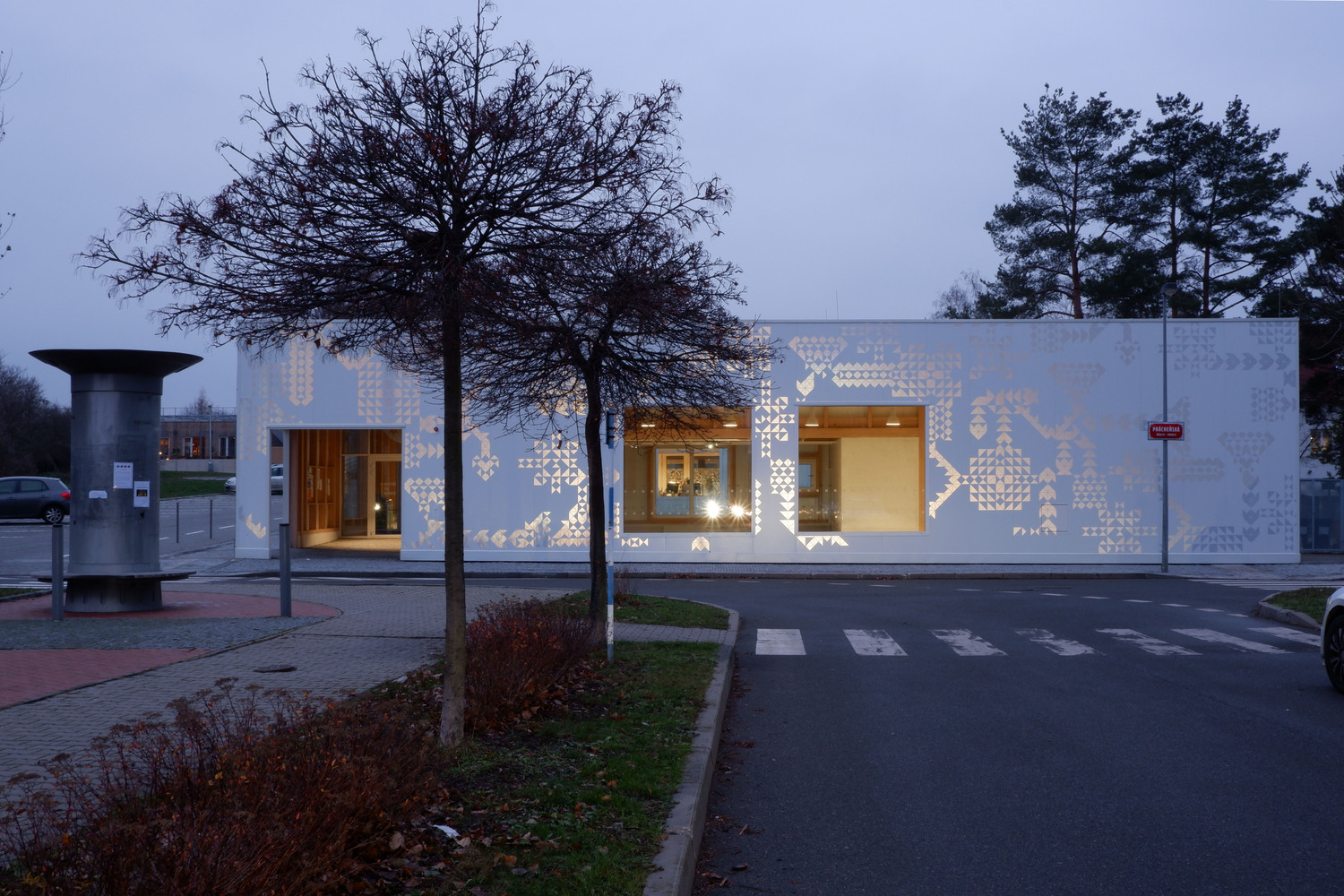DC2 Residence Vincent Van Duysen Architects
2013-09-18 01:00
架构师提供的文本描述。蒂勒洛德的住宅项目是1998年范杜尔森设计的瓦斯蒙斯特特区住宅的客户的第二个项目。客户正从一个纯粹的住宅区转移到一个农村环境。简约存在的房子,适应这些农村和非正式的环境。除了主楼外,该项目还涉及改造旧农舍。
Text description provided by the architects. The project for a house in Tielrode is the second project for the client of the DC residence in Waasmunster, which Van Duysen designed in 1998. The client is moving from a purely residential neighborhood to a rural environment. The brief existed of the building of a house, adapted to these rural and informal surroundings. Apart from the main house, the project also concerned the renovation of the old farm barns.
新建房屋的位置受到现有房屋脚印的限制。Van Duysen的概念可以追溯到简单的农村建筑类型(一长卷平行于街道,有45°山墙屋顶),指的是该地区简单农舍的传统。通过它的位置,它加强了在房子和谷仓之间的庭院,向街道开放。这所房子位于庭院和田野之间,这样既可以享受较小规模的封闭庭院(有正午的阳光),也可以欣赏到田野的远眺。
The position of the new built house was restricted by the footprint of the existing house. The concept of Van Duysen to go back to the simple rural building typology (a long volume parallel to the street, with a 45° gable roof) refers to the tradition of simple farm houses in the region. By its position, it strengthens the courtyard in between the house and the barns, opened up to the street. The house is situated between the courtyard and the fields, in this way enjoying both the smaller scale of the enclosed courtyard (with the midday sun), as well as the far and wide views on the fields.
基本卷中对传统的引用与当代的行刑相结合。详细的设计方法和材料调色板增加了房屋的当代特征。通过使用一致的材料作为外观,任何装饰都被从设计中移除:典型的排水沟和山脊几乎是抽象的,看不见的。传统的屋顶悬吊没有执行,门的门槛没有用比利时的青石进行,木制外墙-指的是旧的木制谷仓-仍在屋顶上。
The reference to tradition in the basic volume is combined with a contemporary execution. The detailed approach to the design and the material palette add to the contemporary character of the house. By the use of a consistent material for the façade, any ornamentation is removed from the design: the typical gutters and ridges are nearly abstract, invisible. The traditional roof overhang was not executed, the door thresholds were not carried out in Belgian bluestone, and the wooden façade –making reference to the old wooden barns- is continued on the roof.
在与业主和承包商协商后,两个旧谷仓没有翻修,而是用与主房相同的设计语言进行了重建,增加了整个项目的特点。乍一看,由于三卷书的抽象性质,这三卷书似乎并不植根于乡村语境。然而,当你进入庭院,你会觉得这个项目确实是植根于传统和规模的直接环境。
After consultation with the client and the contractor, the two old barns were not renovated but rebuilt, in the same design language as the main house, adding to the character of the total project. At first glance, because of their abstract character the three volumes don’t seem rooted in the rural context. However, when you enter the courtyard, you feel that the project is indeed grown rooted in the tradition and the scale of the immediate environment.
在设计中遵循和实现了被动式房屋的原则,与Denc!-工作室和专门从事可持续建设的建筑工作室合作。
The principles of a passive house were followed and achieved in the design, with the collaboration with Denc!-studio, and architectural studio specializing in sustainable construction.
景观设计师保罗·德鲁斯(Paul De Roose)的景观设计,仅限于仔细规划孤零零的树木,修复地形周围美丽的冬青树篱,以及使用刷过的混凝土地板,这是农场庭院的典型特色。这些混凝土地板继续在房子的喷砂结束,在那里他们为一个冷静的内部,适合建筑项目的气氛。
The landscape design by landscape architect Paul De Roose, was limited on purpose to the careful planning of solitary trees, the restoration of the beautiful holly hedge around the terrain and the use of a brushed concrete floor, typical for a function farm courtyard. These concrete floors are continued in the house in a sandblaster finish, where they set the tone for a sober interior, fitting the atmosphere of the architectural project.
 举报
举报
别默默的看了,快登录帮我评论一下吧!:)
注册
登录
更多评论
相关文章
-

描边风设计中,最容易犯的8种问题分析
2018年走过了四分之一,LOGO设计趋势也清晰了LOGO设计
-

描边风设计中,最容易犯的8种问题分析
2018年走过了四分之一,LOGO设计趋势也清晰了LOGO设计
-

描边风设计中,最容易犯的8种问题分析
2018年走过了四分之一,LOGO设计趋势也清晰了LOGO设计


































































































